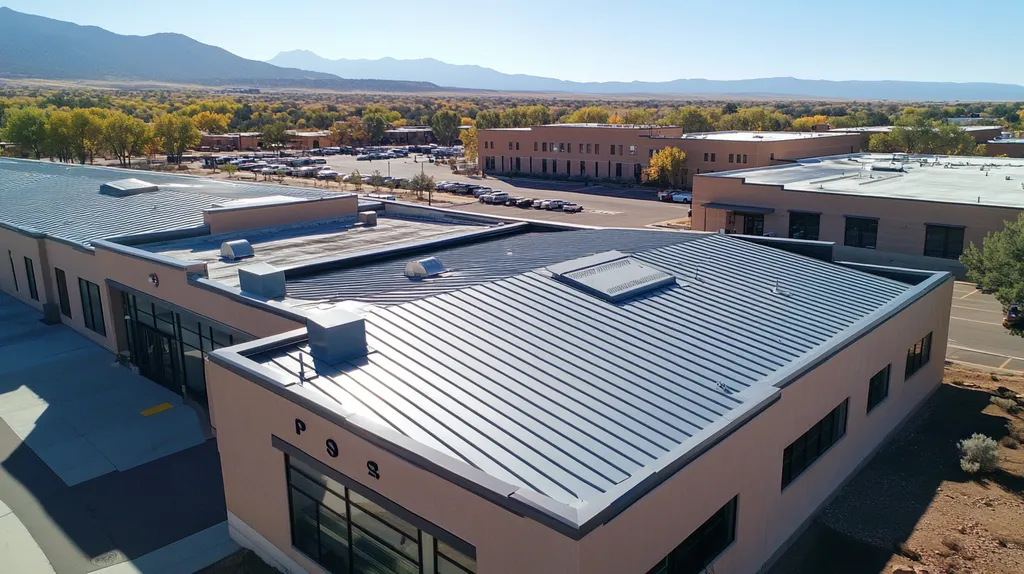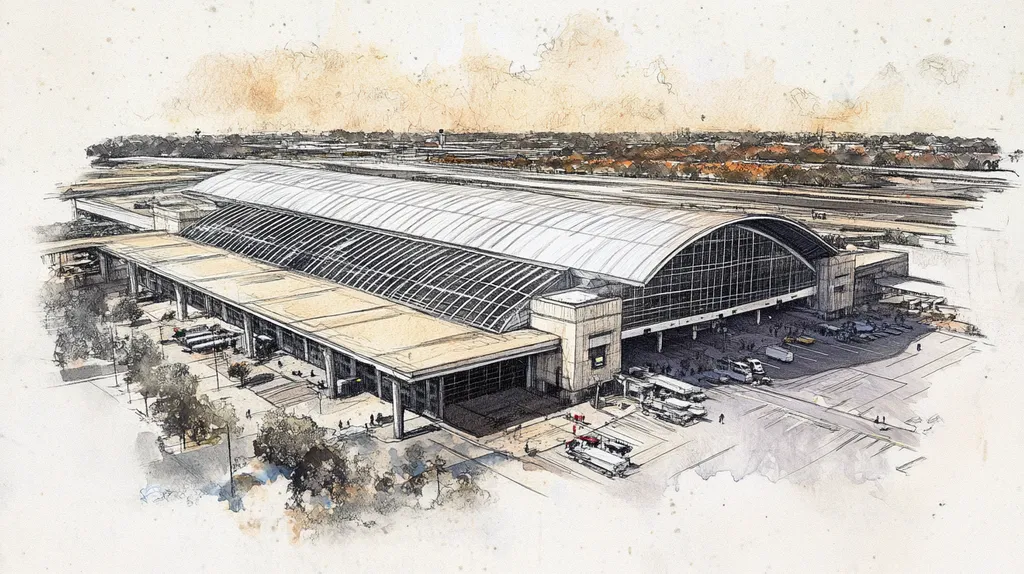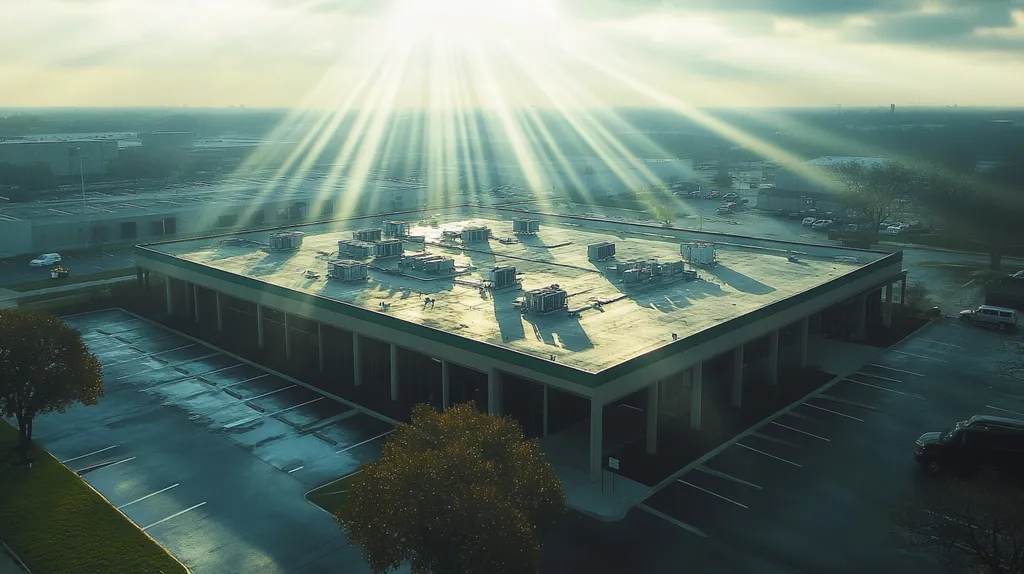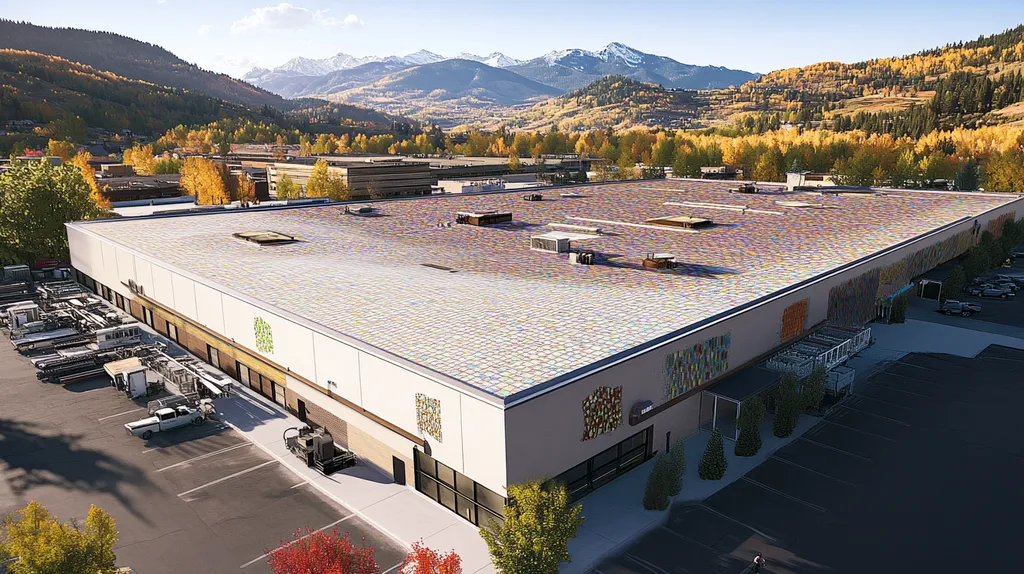Applying commercial roof coatings at the wrong temperature can reduce adhesion by up to 40%, leading to premature failure and thousands in repair costs. Temperature control during application isn’t just a technical detail—it’s a critical factor that determines the success or failure of the entire roofing system.
Understanding proper temperature requirements affects everything from material selection and application techniques to long-term performance and maintenance needs.
This comprehensive guide examines the science behind coating temperatures, provides actionable implementation strategies, and outlines key maintenance protocols that ensure optimal coating performance.
SECTION 1: FUNDAMENTAL CONCEPTS
Getting the temperature just right for applying commercial roof coatings is more than a technical detail—it’s a critical factor that can mean the difference between a successful installation and future headaches. A minor oversight in temperature can lead to costly problems, including premature wear or complete coating failures. Research indicates that coatings not applied within the ideal temperature range risk losing their adhesion and durability, which can result in significant long-term costs. By understanding how temperature, humidity, and coating types interact, property owners can safeguard their investments and ensure reliable performance.
Temperature and Humidity Considerations
The temperature at which roof coatings are applied plays a vital role in their performance. Most coatings have specific temperature ranges for optimal adhesion, generally falling between 50°F and 90°F.
Humidity also significantly impacts the curing process. Excess moisture can prevent coatings from bonding effectively, leading to issues like blistering and peeling. These problems can compromise the integrity of the roofing system, turning an investment into a liability.
The application team must keep a close eye on temperature and humidity. Facilities managers should check weather forecasts before beginning any installation, especially during extreme seasonal conditions.
This proactive approach to monitoring temperature and humidity ensures that coatings adhere properly, providing lasting protection and performance for the building.
Coating Types and Their Temperature Requirements
Each type of roof coating has its own specific temperature requirements, which professionals must consider to achieve the best results. For instance, acrylic coatings typically thrive in moderate temperatures, while silicone coatings boast a wider tolerance range.
Some polyurethane coatings can be applied in cooler weather, but they still require a minimum temperature to cure effectively. Knowing these specific requirements is essential for roofing professionals to select the most suitable product for each scenario.
For example, applying a water-based coating below the manufacturer’s recommended temperatures can lead to incomplete curing and reduced longevity.
Facility managers must collaborate closely with roofing contractors to choose the right products tailored to their unique conditions, maximizing building protection.
Impact of Ambient Conditions on Coatings
The surrounding environment has a direct impact on how well roof coatings perform. Factors like wind and sunlight can significantly affect both temperature and humidity, which in turn influence application quality.
Intense sunlight can heat up roofs beyond recommended levels, potentially causing uneven application and weak adhesion. Wind can introduce moisture into the environment, complicating the curing process.
Awareness of ambient conditions allows roofing crews to tweak their application techniques. They may opt to apply coatings during the cooler parts of the day or use specialized equipment to control local conditions.
Recognizing these variables is essential. Facility managers who prioritize these factors can avoid costly mistakes and enhance the longevity of their roofing systems.
SECTION 2: SYSTEM COMPONENTS
The successful application of commercial roof coatings hinges on multiple essential system components. The stakes are especially high; inadequate preparation can lead to poor adhesion and significantly shorten the lifespan of the coating. Alarmingly, studies indicate that nearly 30% of coating failures stem from improper surface preparation. To make informed decisions that truly maximize their investment, property owners and facility managers must understand these crucial components. This section delves into roof surface preparation, coating material properties, and the compatibility of coatings with existing roofing systems.
Roof Surface Preparation for Coatings
Preparing the roof surface for coatings is a make-or-break step for long-lasting performance. Contaminants such as dirt, grease, and remnants of old coatings can severely impact adhesion. Therefore, property owners should ensure that surfaces are thoroughly cleaned using either a pressure washer or suitable cleaning products before application.
Moreover, any necessary repairs to the roof should be completed fully before coating. Ignored cracks in the substrate can develop into leaks, undermining the coating’s overall effectiveness. It’s crucial for the roof deck to be free of any debris or moisture to create an ideal bonding surface.
Regular inspections play a vital role in this preparation process. Identifying issues like ponding water or signs of deterioration can prevent significant problems in the future. Addressing these concerns ensures a solid foundation for effective coating adhesion.
Weather conditions during preparation also deserve careful consideration. Ideally, surfaces should be completely dry before applying coatings, especially in humid or rainy weather. This attention to detail creates the optimal environment for successful application.
Coating Material Properties and Selection
Selecting the right coating material is critical for achieving optimal roof performance. Different materials, such as silicone, acrylic, and polyurethane, possess unique properties that can influence their effectiveness in various environments. For example, silicone coatings are known for their excellent UV resistance and waterproofing capabilities, making them a fantastic choice for wet climates.
Property owners must also pay attention to the temperature ranges for application. Each type of coating has a specific minimum and maximum temperature for effective curing. Choosing a coating compatible with the current temperature is vital to avoid future failures; for instance, silicone, polyurethane, and SEBS coatings should be applied at temperatures above 40°F (4.4°C) and rising without rain or freezing temperatures in the forecast (source: GAF).
Viscosity is another significant factor; thicker coatings may necessitate specialized application techniques to ensure an even distribution. This aspect can greatly affect the final finish and long-term durability of the roof.
Finally, understanding the warranty terms associated with different coating products provides valuable guidance during selection. A strong warranty often reflects a manufacturer’s confidence in the longevity and performance of a specific material.
Compatibility with Various Roofing Systems
The compatibility of the coating material with existing roofing systems is essential for long-term success. Not all coatings are suitable for every roofing type; for example, a coating that adheres well to metal roofs may not work effectively on single-ply membranes.
It’s important to thoroughly assess the current roofing conditions and materials. Environments with high thermal expansion, such as modified bitumen systems, may need specialized coatings designed to handle movement without cracking.
Compatibility checks should also extend to any previously applied coatings. Some materials may require a primer to adhere properly to existing coatings, which could otherwise lead to premature peeling. Conducting a peel test helps identify potential adhesion issues before the application starts.
Consulting with experienced roofing professionals can provide invaluable insights on the best material combinations for specific roofing systems. This collaboration minimizes risks and ensures the selected coating will effectively function with existing structures.
SECTION 3: IMPLEMENTATION METHODS
Understanding the correct implementation methods for applying commercial roof coatings is crucial to avoiding costly mistakes. The right timing and technique can mean the difference between a roof that lasts for years and one that faces early deterioration. Each application approach comes with its own advantages and challenges, tailored to the unique needs of specific projects.
Application Techniques: Spraying, Rolling, and Brushing
The choice of application technique significantly impacts the effectiveness of roof coatings. Spraying allows for an even coat and excels at covering uneven surfaces. However, it demands skilled operators and optimal conditions to prevent overspray and waste.
Rolling is an ideal method for smaller projects or less experienced crews. It offers enhanced control and minimizes material waste, though multiple coats may be necessary to achieve the desired thickness.
On the other hand, brushing is perfect for detailed work and tight spaces. While it yields an excellent finish for minor repairs, it is labor-intensive and not recommended for larger commercial roofs.
Ultimately, selecting the right method depends on project specifics, coating material guidelines, and real-time weather conditions during the application process.
Equipment and Tools Necessary for Application
The right tools and equipment are essential for a successful roof coating application. Depending on the chosen method, contractors may need airless spray machines, rollers, brushes, or specialized extension poles. Airless sprayers, for instance, deliver coatings evenly at high pressures, making them ideal for larger areas.
In addition to application tools, protective gear like gloves, goggles, and respirators ensures the safety of the crew. Proper mixing tools are also necessary to ensure the coating is well-prepared before application.
Investing in high-quality equipment helps avoid common application problems, such as clogging or uneven coating thickness. With the right tools, contractors can enhance the effectiveness and longevity of the coating, leading to better overall results.
Best Practices for Even Coverage and Adhesion
Achieving uniform coverage and strong adhesion is critical in commercial roof coating applications. Contractors should start by assessing the roof surface for any moisture, debris, or signs of wear. A clean surface is essential; any contaminants can hinder proper adhesion.
Applying coatings within recommended temperature ranges greatly improves drying and curing. Monitoring weather is crucial; extreme temperatures can adversely affect coating performance.
Layering techniques play a significant role in achieving effective adhesion. Opting for multiple thin coats instead of one thick layer can improve overall coverage, reducing the chance of drips or uneven patches.
Finally, conducting routine inspections post-application is vital for catching any adhesion challenges early on. Timely repairs help maintain the roof’s integrity and prolong its lifespan.
SECTION 4: MAINTENANCE REQUIREMENTS
Ensuring proper maintenance of commercial roof coatings is not just a good practice—it’s essential for the roof’s longevity and effectiveness. Failing to maintain the roof can lead to costly repairs or even premature replacement. Studies show that regular inspections and maintenance can extend the life of a roof by up to 20%, translating to significant savings over time. This section outlines the fundamental maintenance protocols that every property owner and facility manager should adopt to protect their roofing investment.
Regular Inspection and Cleaning Protocols
Regular inspections are vital to catch small issues before they balloon into major problems. Property owners should conduct inspections at least twice a year, ideally in spring and fall, to evaluate the integrity of the roof coating. This includes checking for blisters, cracks, and peeling that could compromise the roof’s performance.
Cleaning the roof is equally crucial. Removing debris prevents moisture accumulation, which can accelerate deterioration. A thorough cleaning—ideally through pressure washing—should be performed early in the spring when dirt and pollen buildup is at its highest.
Documenting all inspection and cleaning activities helps create a maintenance history. This record is invaluable for warranty claims and when planning future maintenance budgets. Remember, ignoring these steps could hide damage that might lead to significant structural issues later.
Recoating Schedules and Procedures
To maintain the protective qualities of a roof, recoating is essential. Most commercial roof coatings should be reapplied every five to ten years, depending on environmental factors and the specific type of coating in use. Facility managers should establish a recoating schedule based on manufacturer recommendations to ensure optimal performance.
Before recoating, inspect and clean the surface thoroughly. Address any repairs for cracks or leaks to ensure the new coating adheres effectively. Choosing the right type of coating is crucial, as some types offer better durability and may require less frequent recoating.
By adhering to a well-planned recoating schedule, property owners can prevent accelerated wear and avoid the costly consequences of a failing roof.
Addressing Common Issues and Repairs
Common challenges with commercial roof coatings include blistering, cracking, and bubbling. Early detection is critical; these issues can result in serious roof failure if left unattended. When problems arise, prompt repair is necessary.
Minor cracks can often be filled with specialized roofing sealants, while larger issues may require the recoating or replacement of specific sections. Furthermore, it’s important to understand the underlying causes of these issues. For example, chronic water pooling might indicate inadequate drainage, necessitating structural adjustments.
By proactively addressing these common problems and understanding their causes, facility managers can ensure that their roof coatings perform optimally, effectively mitigating unexpected repair costs.
SECTION 5: PERFORMANCE METRICS
Understanding performance metrics is essential for the effective use of commercial roof coatings. The right adhesion and proper curing times can drastically impact a roof’s durability and safety. Research shows that applying coatings at incorrect temperatures can diminish adhesion by up to 40%. This oversight can lead to increased maintenance costs, early failures, and possible safety hazards. Property owners must focus on these metrics to secure a long-lasting, high-performing roofing system.
Evaluating Adhesion and Curing Times
The adhesion of roof coatings is vital for ensuring their long-lasting performance. If coatings are applied outside the recommended temperature range, the bond can weaken, increasing the risk of water leaks and structural damage.
Curing time is another critical factor. Coatings applied in cooler temperatures often take longer to cure, which can delay project timelines and increase exposure to contaminants like dust or debris during the curing phase.
To mitigate these risks, facilities managers should monitor weather conditions closely and have a thermometer on site to confirm the ambient temperature during application. This simple yet effective measure can foster optimal adhesion and ultimately lower long-term costs.
By strictly following recommended temperature ranges and curing guidelines, roofing systems can achieve enhanced reliability and performance, safeguarding the investment in the building.
Assessing Energy Efficiency and UV Resistance
In today’s climate, energy efficiency has become a must-have metric for commercial roofs due to rising energy costs. Coatings that do not adhere properly may struggle to reflect heat effectively, resulting in increased demand on HVAC systems and higher energy bills.
UV resistance also plays a crucial role in protecting the roofing materials beneath the coating. Improperly applied coatings can break down when exposed to UV rays, significantly shortening their lifespan. This can lead to frequent replacements and inflate overall project costs.
Building owners should examine the solar reflective index (SRI) of the chosen roof coatings before application. This metric is directly linked to energy efficiency and can help ensure a sound investment in both short- and long-term sustainability.
By prioritizing energy efficiency and UV resistance, facility managers can make better choices that enhance the longevity and performance of commercial roofing systems.
Measuring Long-Term Durability and Performance
Long-term durability stands as a key metric in determining the success of any commercial roofing project. Coatings applied outside the appropriate temperature ranges are prone to premature degradation, which can manifest as cracking, peeling, or blistering—issues that necessitate costly repairs or even full replacements.
Performance metrics should also reflect a coating’s resistance to environmental variables, such as extreme weather conditions. A coating’s ability to endure high winds, heavy rains, and drastic temperature shifts is crucial to its lifespan.
Regular inspections are essential for detecting early signs of wear and tear. Implementing a proactive maintenance program allows facility managers to catch potential problems before they escalate into major issues.
Understanding these performance metrics provides facility managers with the insight necessary to protect their investments while extending the life of their roofing systems significantly.
SECTION 5: PERFORMANCE METRICS
Understanding performance metrics is vital for commercial roof coatings, as these factors directly influence durability and safety. For instance, research indicates that improper application temperatures can reduce a coating’s adhesion by up to 40%. Such an oversight can escalate maintenance costs, lead to premature failures, and even pose safety risks. Property owners need to assess these metrics to ensure their roofs remain high-performing and long-lasting.
Evaluating Adhesion and Curing Times
The adhesion of roof coatings is essential for their effectiveness and lifespan. If applied outside the recommended temperature range, the bond can weaken significantly. This can not only jeopardize the coating but also lead to serious issues like water infiltration and structural damage.
Curing times must also be monitored closely. Coatings applied in cooler weather often take longer to cure, delaying project completion and leaving the surface vulnerable to contamination from dirt and debris during this phase.
To mitigate these risks, facilities managers should monitor weather conditions diligently and keep a thermometer on-site to verify ambient temperatures during application. This straightforward step can promote optimal adhesion and help minimize long-term costs.
Ultimately, sticking to proper temperature guidelines for both application and curing is key to achieving a reliable roofing system that performs well over time.
Assessing Energy Efficiency and UV Resistance
Energy efficiency has become a critical evaluation metric for commercial roofs, especially as energy costs rise. Roof coatings that have poor adhesion may fail to reflect heat effectively, placing undue strain on HVAC systems and inflating energy bills.
UV resistance is another crucial consideration that safeguards the roof’s underlying materials. Coatings applied incorrectly due to temperature issues can deteriorate under UV exposure, further reducing their lifespan. This can lead to unplanned replacements and increase overall project expenses.
Building owners should carefully examine the solar reflective index (SRI) of the selected coatings prior to application. This metric is directly tied to energy efficiency, helping to ensure a prudent investment for both the short and long term.
By prioritizing these evaluations, facility managers can make informed choices that enhance the energy efficiency and sustainability of their roofing systems.
Measuring Long-Term Durability and Performance
Long-term durability is a paramount metric indicating the success of any commercial roofing project. When coatings are applied outside the ideal temperature range, they can suffer from premature degradation, exhibiting issues such as cracking, peeling, or blistering that necessitate costly repairs or replacements.
Performance metrics should also encompass the coating’s resistance to environmental factors, including extreme weather conditions. The ability to endure high winds, heavy rains, and significant temperature shifts is vital for a coating’s longevity.
Regular inspections play a crucial role in detecting early signs of wear and tear. Implementing a proactive maintenance program can help facility managers identify potential problems before they develop into major and costly issues.
Understanding these performance metrics equips facility managers with the insights needed to protect their investments effectively while significantly extending the life of their roofing systems.
The Bottom Line
Temperature control during commercial roof coating application represents a make-or-break factor that can reduce coating effectiveness by up to 40% when handled incorrectly.
The financial implications are significant – improper temperature management during installation leads to premature coating failure, requiring expensive repairs or complete replacement years before expected.
Facility managers must prioritize proper temperature monitoring, material selection, and application timing to maximize their roofing investment.
By following temperature guidelines, maintaining thorough documentation, and implementing regular inspections, commercial properties can achieve optimal coating performance and significantly extended roof life.
The difference between success and failure often comes down to this critical yet frequently overlooked aspect of commercial roof coating installation.
FREQUENTLY ASKED QUESTIONS
Q. What temperatures are ideal for commercial roof coating application?
A. The ideal temperatures for applying commercial roof coatings generally range from 50°F to 90°F. Applying within this range ensures proper adhesion and prevents future failures. Monitoring both temperature and humidity is crucial for a successful application and long-lasting results.
Q. Why is proper roof surface preparation essential for commercial roofs?
A. Proper surface preparation is vital as contaminants like dirt or grease can hinder adhesion. A clean and fully repaired surface creates an ideal bonding environment, ensuring the longevity and performance of the coating. Inspections should also identify and address any potential issues to protect your investment.
Q. What application methods are best for commercial roof coatings?
A. The right method depends on project specifics. Spraying provides even coverage while rolling is better for smaller areas. Brushing is ideal for detailed work, although labor-intensive. Choose a technique that aligns with your coating material and project requirements for the best results.
Q. How can I maintain my commercial roof coatings effectively?
A. Regular inspections and cleanings are key to maintaining your roof coatings. Inspect at least twice a year and clean debris to prevent moisture buildup. Recoating may be necessary every five to ten years, depending on environmental factors and specific coating types.
Q. What performance metrics should I focus on for my commercial roof?
A. Key performance metrics include adhesion, curing times, energy efficiency, and UV resistance. Monitoring these factors helps ensure your roof coating performs well over time, preventing costly repairs and guaranteeing the longevity of your systems.
Q. What challenges can impact the application of industrial roof coatings?
A. Challenges include extreme temperatures, humidity levels, and unpredictable weather conditions. These factors can affect curing and adhesion. Awareness of these variables ensures that proper techniques and timing are employed to mitigate risks, enhancing the application quality and durability of the coatings.
Q. Which types of commercial roof coatings are best suited for my facility?
A. The best roof coatings depend on your facility’s specific needs and environment. Silicone for wet climates, acrylic for versatility, and polyurethane for cooler temperatures are common choices. Assess your roofing conditions and consult with professionals to select the most suitable coating for optimal performance.











